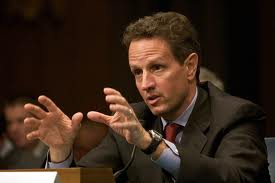
As Secretary of the United States Treasury, Timothy Geithner's voice on fiscal matters has become emblematic of the Obama administration. Now that the global financial crisis is approaching the fourth anniversary of the precipitous collapse of investment banking firm Lehman Brothers and the catastrophic domino effect it brought about, economists and policy makers are busy trying to find culprits.
Secretary Geithner does not believe that the repeal of the Glass-Steagall Act had too much effect on the current financial crisis. Mr. Geithner has been appearing in a few cities in the West Coast and the Pacific Northwest over the last few days. At a speech in San Francisco, Mr. Geithner was quoted by Bloomberg media as not blaming the repeal of the Glass-Steagall Act for leading American banks into taking on the risks that ended up in failures and federal bailouts.
Mr. Geithner admitted that his view is probably not the most popular. The Banking Act of 1933 -the formal name of the Glass-Steagall Act- was enacted in the wake of the Great Depression. It sought to limit speculative transactions such as lending based on risky collateral like mortgage-backed securities (MBS). Since its enactment, bankers and Wall Street investors put pressure on politicians to ease up on the many restrictions imposed by it. The greatest pressure on the Banking Act came in the late 1990s, after the Federal Reserve Board had already approved speculative mergers between financial institutions.
The most significant repeal of the Glass-Steagall Act came in 2009, with the Gramm–Leach–Bliley Act. Mr. Geithner believes that the safeguards that the Banking Act put in place after the Great Depression could not contain the leverage that developed outside of it. According to Geithner, the risk-taking took place outside of the banking system, which is why neither Geithner or the administration of President Barack Obama seem interested in bringing back Glass-Steagall.



